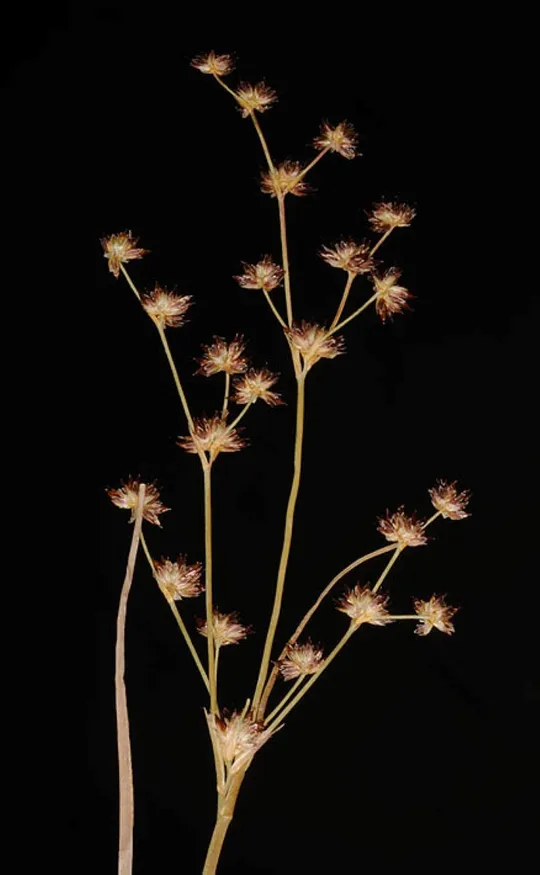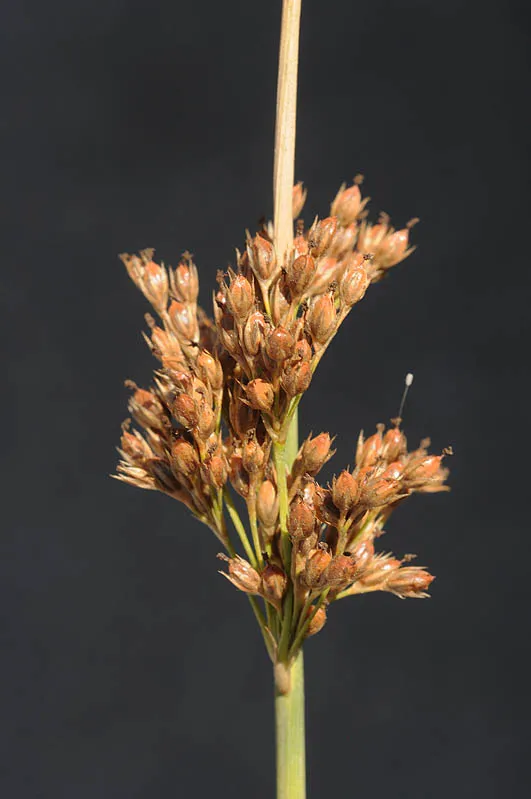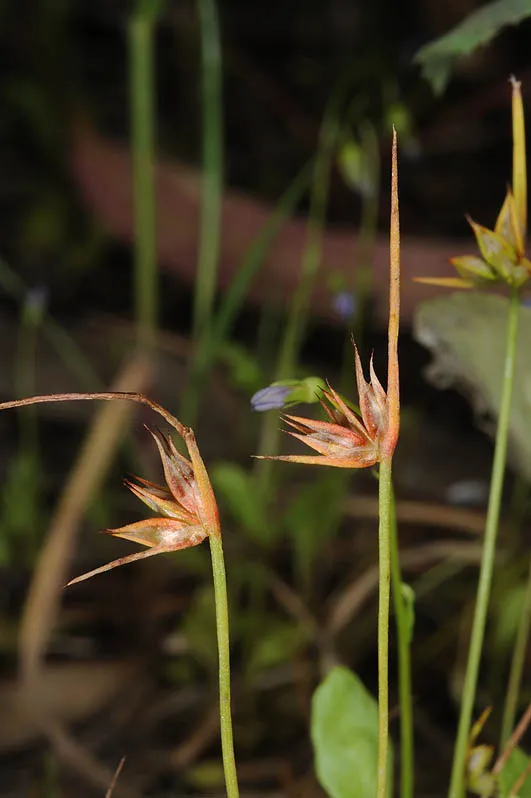Jointed Rush
Juncus articulatus

Juncus articulatus currently grows only in two regions in Israel: the
Sharon and at the foot of Mount Hermon. In these regions it is found with
certainty only at three sites, but it is estimated that there are about five
sites. J. articulatus
is extinct in the Acre Valley and Pleshet. In the Sharon, it grows
in Ahu Binyamina and Samar Pool near Hadera, but it has disappeared from the
Batich Pona and from Netanya. In the low Hermon it is found near Maǧdal Shams.
In the Acre Valley it is extinct from Kurdani, Jidaro and Kiryat Haim and in Pleshet
from Wadi Sorek. Danin (2004) noted the species from both the Golan Heights and
the Judean Mountains, based on the literature or on observations, but there is
no evidence of this in the Herbarium data sheets.
Seasonal puddles and marsh margins.
The genus Juncus is the largest and major
genus in the Juncaceae
family. It is a cosmopolitan genus that includes about 300 species whose
distribution center is in cold regions, with only a small number of species
found in the tropics. There are 53 species in Europe and 47 species in
Australia of which 26 are exotics that were introduced by humans. The genus
includes annual and perennial herbaceous plants. Among the annual species some are low, miniscule plants, 5-10
cm tall (J. sphaerocarpus, J. capitatus and others, e.g. J. bufonius are taller. Some of the perennial species are thorny plants, whose
height may reach 1.8 m and they create dense impenetrable stands. Eleven species
of Juncus grow in Israel, mainly in marshes, riverbanks and salt marshes.
The most common species are J. acutus, J. rigidus and J. maritimus, all of which
are large perennial species. In several areas, e.g. Egypt, the tall Juncus
species have been used since ancient times to make mats, coarse woven materials
and for creating twisted ropes. Mat weaving persisted in the Acre Valley until
the 20th century; the species used were J. acutus and J. maritimus.
For the family – see J. sphaerocarpus.
·
The distribution data for Juncus articulatus indicate its progressive extinction: the number of
regions decreased from four to two; the species disappeared from over half the sites
from which it was previously known.
·
Seasonal ponds and coastal marshes are the most negatively
affected habitats and their disappearance is the reason for the extinction of J. articulatus populations.
·
J. articulatus is not protected in any nature reserve in Israel. The Ahu Binyamina
and Samar Pond near Hadera, where it grows, are only proposed nature reserves
at this stage.
·
J. articulatus has a broad global distribution, does not appear in red books and its
status according to the IUCN is "Least Concern" (LC).
The Ahu Binyamina should be formally declared
a nature reserve. Maintaining a suitable water regime at the site will provide
protection for the largest surviving population of Juncus articulatus in
Israel.
Juncus articulatus
has a broad distribution throughout the temperate regions of the world – in
Europe, Asia and North America. It is also found in South Africa, South
Australia, New Zealand and South America. Its distribution outside Eurasia is
probably range expansion and new dispersal from the past hundred years. In the
Mediterranean Basin, J. articulatus
is extremely common in Italy, France, Corsica and Sardinia. In
the Maghreb countries, it is common in Morocco and is also found in Algeria and
in Tunisia. It is not common in the Eastern Mediterranean countries.
Juncus articulatus is a perennial herbaceous species that grows in marshes, found at a small number of sites in Israel. It is extinct in two regions and disappeared from numerous sites where it grew in the past, due to the great damage suffered by wetlands habitats in Israel. It has a broad global distribution and is not globally endangered.
Current Occupancy Map
| 1000 squre meter pixel | 5000 squre meter pixel | 10000 squre meter pixel | |
|---|---|---|---|
| number of observations | 0 | 0 | 0 |
| in total pixels | 0 | 0 | 0 |
| Family | Juncaceae |
| Classification | On the endangered species list |
| Ecosystem | Mediterranean |
| Chorotype | Euro-Siberian – Mediterranean – Irano-Turanian (Cosmopolitan?) |
| Conservation Site | Ahu Ahu Binyamina |
| Rarity |
1
4
6
|
|---|---|
| Vulnerability |
0
3
4
|
| Attractiveness |
0
0
4
|
| Endemism |
0
0
4
|
| Red number |
1
4.2
10
|
| Peripherality | N |
| IUCN category | DD EW EX LC CR EN VU NT |
| Threat Definition according to the red book | Endangered |
 Based on:
Based on:






